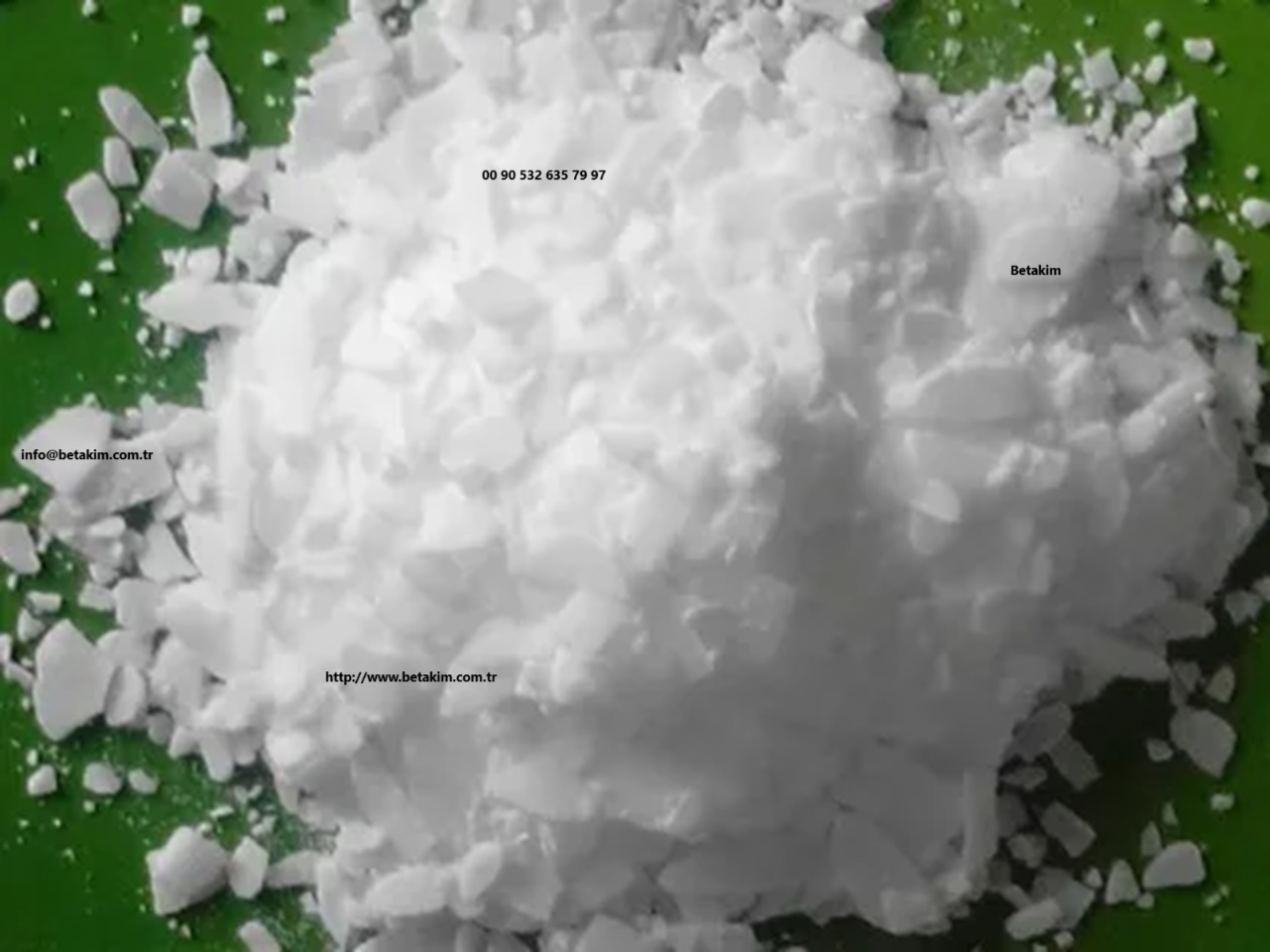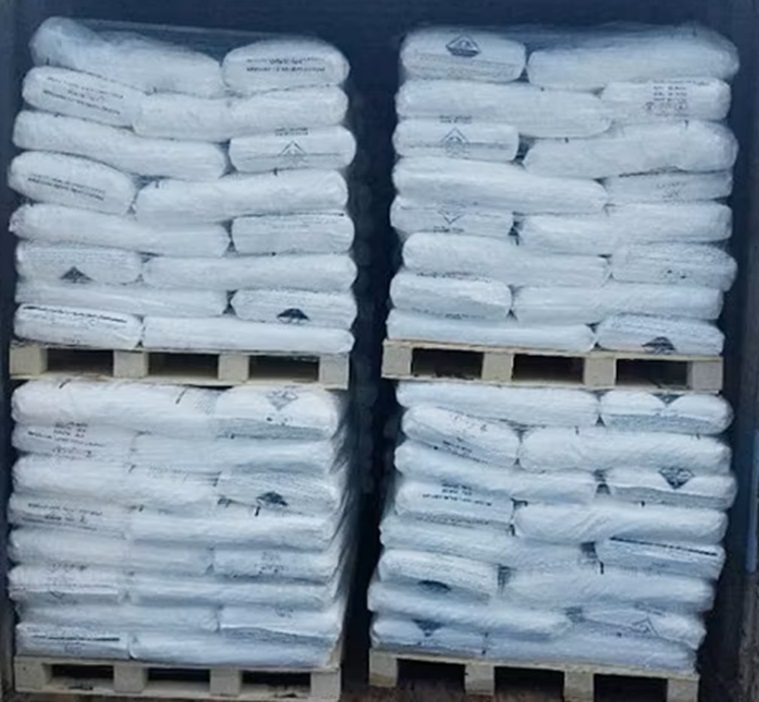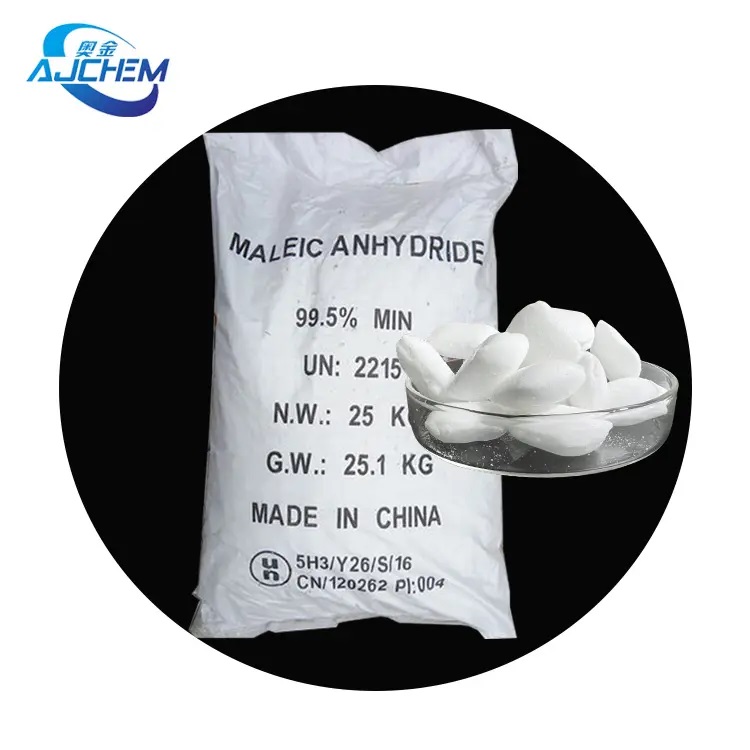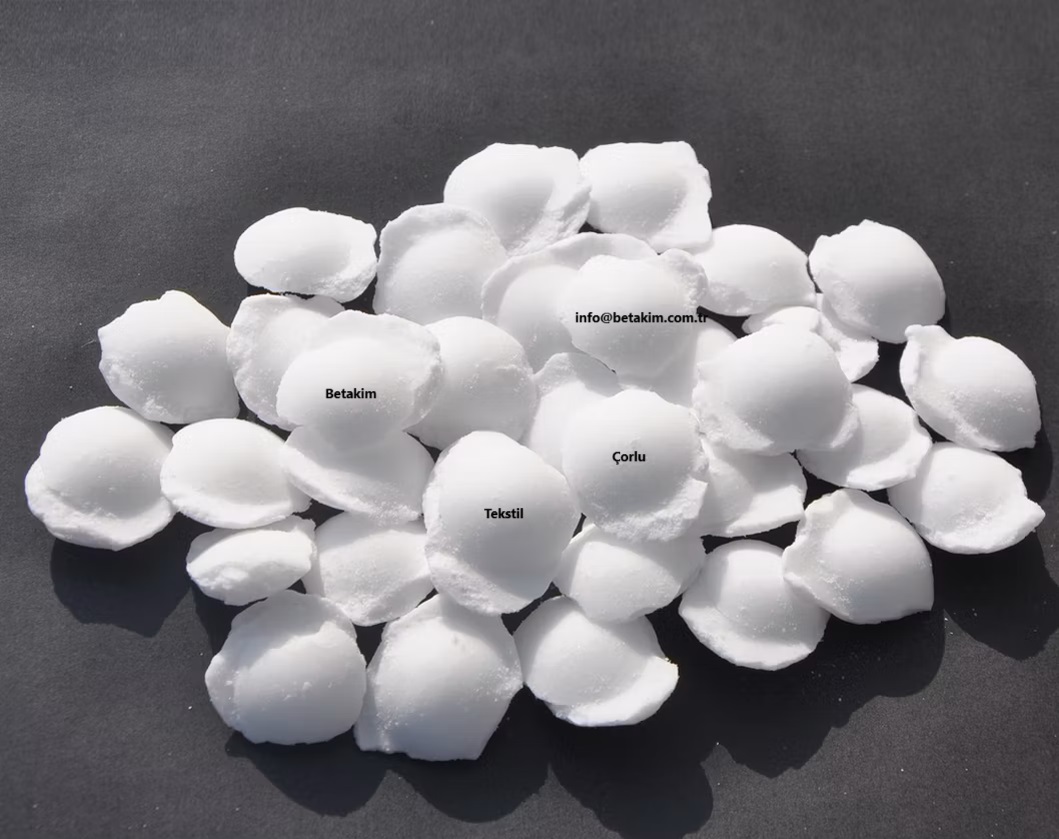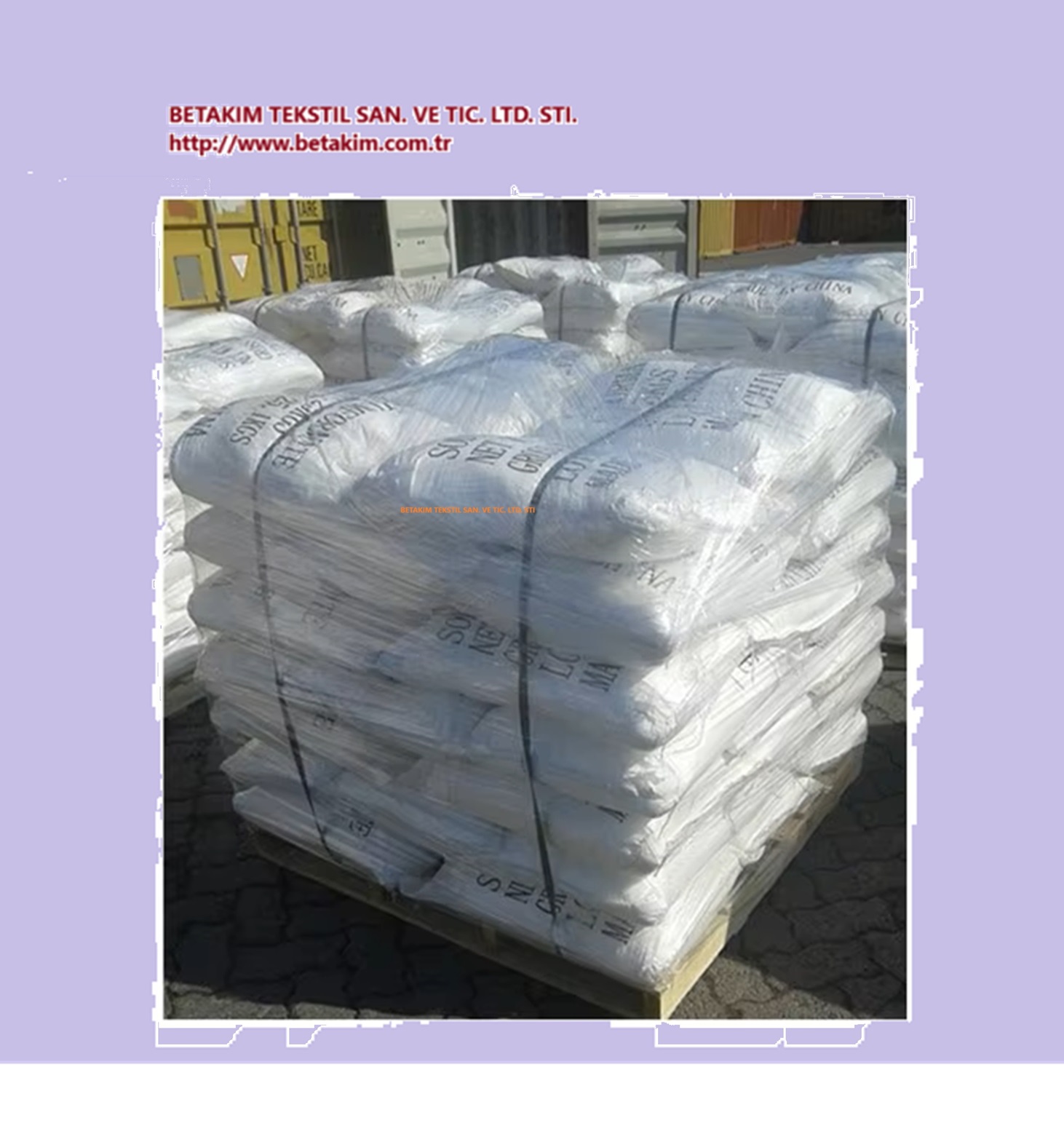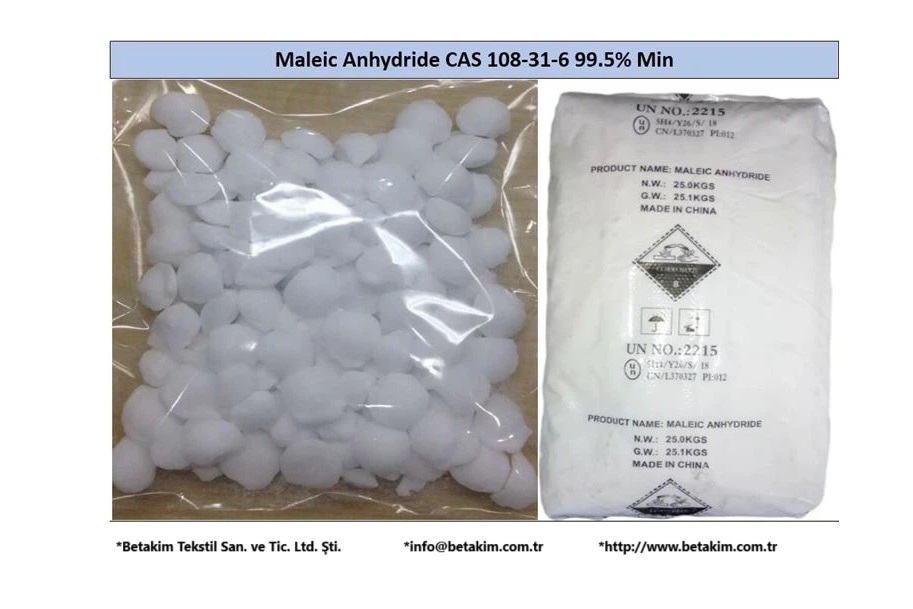We unleash your business potential by maximize the business innovation.
Send EmailMaleic Anhydride, MALIEC ANHYDRIDE, Toxilic Anhydride, MA, 108-31-6
Maleic anhydride, also known as maleik anhidrit in Turkish, is an organic compound with the formula C4H2O3. It is the acid anhydride of maleic acid and is commonly used in the production of coatings, polymers, and various chemical reactions2.
Physical Properties
-
Appearance: White crystals or needles.
-
Odor: Irritating, choking smell.
-
Density: 1.48 g/cm³.
-
Melting Point: 52.8 °C.
-
Boiling Point: 202 °C.
-
Solubility: Reacts with water.
Chemical Properties
-
Chemical Formula: C4H2O3.
-
Molecular Weight: 98.057 g/mol.
-
CAS Number: 108-31-6.
-
Reactivity: Reacts with water to form maleic acid.
Other Names
-
Furan-2,5-dione
-
cis-Butenedioic anhydride
-
Toxilic anhydride
Maleic anhydride is widely used in the production of unsaturated polyester resins, which are used in fiberglass-reinforced plastics. It is also used in the manufacture of agricultural chemicals, lubricating oil additives, and as a chemical intermediate in various industrial processes
CAS: 108-31-6
Molecular Formula: C4H2O3
Names and Identifiers
| Name | Maleic anhydride |
| Synonyms | MA 2,5-FURANDIONE 2,5-Furandione furan-2,5-dione Maleic Anhydride MALIEC ANHYDRIDE Maleic anhydride ANHYDRIDE MALEIC TOXILIC ANHYDRIDE Sodium n-amylxanthate cis-Butenedioic anhydride |
| CAS | 108-31-6 |
| EINECS | 203-571-6 |
| InChI | InChI=1S/C4H2O3/c5-3-1-2-4(6)7-3/h1-2H |
| InChIKey | FPYJFEHAWHCUMM-UHFFFAOYSA-N |
Physico-chemical Properties
| Molecular Formula | C4H2O3 |
| Molar Mass | 98.06 |
| Density | 1.48 |
| Melting Point | 51-56 °C (lit.) |
| Boling Point | 200 °C (lit.) |
| Flash Point | 218°F |
| Water Solubility | 79 g/100 mL (25 ºC) |
| Vapor Presure | 0.16 mm Hg ( 20 °C) |
| Vapor Density | 3.4 (vs air) |
| Appearance | White powder |
| Color | White |
| Exposure Limit | NIOSH REL: TWA 1 ppm (0.25 mg/m3), IDLH 10 ppm; OSHA PEL: TWA0.25 ppm; ACGIH TLV: TWA 0.25 ppm with an intended change of 0.1 ppm. |
| Merck | 14,5704 |
| BRN | 106909 |
| pKa | 0[at 20 ℃] |
| PH | 0.8 (550g/l, H2O, 20℃)Hydrolysis |
| Storage Condition | Store below +30°C. |
| Stability | Stable. Combustible. Incompatible with water, strong oxidizing agents, alkali metals, strong bases, amines, most common metals, polymerization catalysts and accelerators. |
| Sensitive | Moisture Sensitive |
| Explosive Limit | 1.4-7.1%(V) |
| Refractive Index | 1.4688 (estimate) |
| Physical and Chemical Properties |
character orthorhombic crystal system colorless needle-like or plate-like crystals. |
| Use | It is used as a raw material for the production of 1, 4-butanediol, γ-butyrolactone, Tetrahydrofuran, succinic acid, unsaturated polyester resin, alkyd resin, etc., and is also used for pharmaceuticals and pesticides |
Risk and Safety
| Hazard Symbols | C - Corrosive |
| Risk Codes | R22 - Harmful if swallowed R34 - Causes burns R42/43 - May cause sensitization by inhalation and skin contact. |
| Safety Description | S22 - Do not breathe dust. S26 - In case of contact with eyes, rinse immediately with plenty of water and seek medical advice. S36/37/39 - Wear suitable protective clothing, gloves and eye/face protection. S45 - In case of accident or if you feel unwell, seek medical advice immediately (show the label whenever possible.) |
| UN IDs | UN 2215 8/PG 3 |
| WGK Germany | 1 |
| RTECS | ON3675000 |
| FLUKA BRAND F CODES | 21 |
| TSCA | Yes |
| HS Code | 2917 14 00 |
| Hazard Class | 8 |
| Packing Group | III |
| Toxicity | LD50 orally in Rabbit: 1090 mg/kg LD50 dermal Rabbit 2620 mg/kg |
Upstream Downstream Industry
| Raw Materials | Benzene o-Xylene Liquefied petroleum |
| Downstream Products | Fumaric acid (2R,3R)-2,3-Dihydroxybernsteinsaeure Succinic anhydride potassium sodium tartrate Potassium bitartrate 3,6-Dihydroxypyridazine gamma-butyrolactone malathion |
Introduction
also known as maleic anhydride or anhydrous Apple anhydride, often abbreviated as maleic anhydride. Colorless crystal, a strong stimulus odor, freezing point of 52.8 ℃, boiling point of 202 ℃, easy sublimation. It is mainly prepared by oxidation of n-butane or butene in benzene or C4 fraction, and is a raw material for the production of unsaturated polyester and organic synthesis.
Production method
- The main production methods of maleic anhydride are benzene oxidation, butylene oxidation and n-butane oxidation, but the benzene oxidation is still the main method. 1. Benzene oxidation of benzene benzene is oxidized in a fixed bed under the action of a V-Mo-P catalyst to produce maleic anhydride at a reaction temperature of 365 ° C. (the reaction bed can also be used as a fluidized bed, but the consumption is high). Then the water is absorbed to produce maleic acid, and then the azeotropic dehydration and rectification are carried out to obtain the finished product. 2. Butane (or butene) oxidation butane (or butene) in the role of V-Mo catalyst, by air or oxygen oxidation to maleic anhydride, reaction temperature 350-400 ℃. It is then absorbed by water, dehydrated and refined to obtain a finished product.
- The synthesis method of maleic anhydride mainly includes benzene oxidation method, butene oxidation method, butane oxidation method, etc. At present, most of the benzene oxidation method is used in the production, that is, benzene is used as the raw material, and maleic anhydride is obtained by catalytic oxidation.
- a fixed-bed or ebullated-bed reactor was used to oxidize benzene to maleic anhydride with air under the action of a V-Mo-P catalyst at a reaction temperature of 365 °c. Then it is absorbed with water to form an aqueous solution of maleic acid, and then it is subjected to azeotropic distillation of xylene to obtain maleic anhydride. Finally, it is subjected to vacuum distillation to obtain a finished product.
Nature
colorless orthogonal needle crystal or white crystalline powder. Soluble in water, acetone, benzene, chloroform and other organic solvents. Solubility at 25 °c in the following solvents (GLOG): acetone 227, ethyl acetate 112, chloroform 52.5 1 benzene 50 1 toluene 23.4; O-xylene 19.4; Carbon tetrachloride 0.25; Petroleum ether. Soluble in alcohol to form ester. Dissolved in dioxane. Sublimated by heat. In case of high heat, open flame or contact with oxidant, there is a risk of combustion. Corrosive. Slowly hydrolyze in cold water to produce maleic acid. Contact with strong oxidants can cause combustion and explosion. If the temperature exceeds 66 ° C., the polymerization reaction may occur in contact with amines or alkali metals.
Preparation Method
malic acid reacts with acetyl chloride at a certain temperature. After the reaction, it is distilled and recrystallized from chloroform to obtain pure maleic anhydride.
Supplementary Information
category
Toxic grade poisoning
Acute oral toxicity-rat LD50: 708 mg/kg; Oral-mouse LD50: 2400 mg/kg
Skin irritation data-rabbit 500 mg/24 h mild; Eyes-rabbit 1%/2 min severe
Explosive hazard characteristics and explosive properties of air mixture
Flammable hazard characteristics flammable; Spicy and irritating smoke released from fire scene
Storage and Transportation characteristics the warehouse is ventilated and dried at low temperature; It is stored separately from the oxidant and amine
Extinguishing agent carbon dioxide, foam
Occupational Standard TWA 1 mg/m3; PEL 2 mg/m3
Use
A reagent having an organic compound having a conjugated double bond was measured. Also used in synthetic resin, paint, pesticide, medicine, food, and lubricating oil additives.
Stability
avoid exposure to moist air. Avoid contact with strong oxidizing agent, strong reducing agent, strong acid, strong alkali, alkali metal, water
- a colorless needle-like or plate-like crystal of orthorhombic crystal system. Dissolved in water to produce maleic acid. Dissolve in ethanol and produce esters.
- soluble in ethanol, ether and other organic solvents, difficult to dissolve in petroleum ether and carbon tetrachloride. The reaction with hot water produces maleic acid. It is easy for the olefin-based monomer to undergo copolymerization reaction; Homopolymerization may also be performed. It reacts with a glycol to form a linear unsaturated polyester and reacts with sulfur trioxide to form sulfonated maleic anhydride. Flammable. Toxic, splash and the skin should be washed with plenty of water. Production equipment should be sealed, and operators should wear protective equipment.
the product is toxic
Its toxicity is greater than that of the acid, which can stimulate the skin and mucous membranes. When the human body is exposed to high temperature liquid, its irritation is more serious, which can cause skin burning to injury, conjunctival and corneal redness, and even blindness in severe cases. LD50 for rats was
400 mg/kg. Mouse oral LD5060 ~ 465mg/kg. The maximum allowable concentration in air is 0.25*10-6. Rinse with plenty of water when splash and skin. Production equipment should be sealed, and operators should wear protective equipment.
present in smoke
strong irritation, causing burns, inhalation can cause pulmonary edema.
- is easily esterified. Acetic acid was evolved by heating to above 150 °c. The solution was heated to 100 °c where molecular chain scission occurred.
Safety
its dust and vapor are irritating. The staff should be protected and the working environment should be well ventilated. Should be stored separately from the oxidant, alkali. Store in a cool, ventilated warehouse. Keep away from fire and heat source. Protection from direct sunlight. The packaging must be sealed and free from moisture.
Scope of Application
The plastics industry is used to make plasticizers. The paper industry is used for the manufacture of paper treatment agents. Synthetic resins are industrially used in the manufacture of unsaturated polyester resins, alkyd resins, etc. The coating industry is used in the manufacture of insulating paint, white enamel, baking paint, varnish, etc. The pesticide industry is used for the manufacture of pesticide marathon and high efficiency and low toxicity pesticide 4049. The pharmaceutical industry is used in the manufacture of long-acting sulfonamides. The oil and fat industry is used as a preservative for fats and oils. The organic industry is used to produce fumaric acid and tetrahydrofuran. Used as a chemical reagent in analytical chemistry.
Precautions for use
Overview of risk
- health hazards: The product is irritating to dust and steam. After inhalation can cause pharyngitis, laryngitis and bronchitis. May be accompanied by Abdominal Pain. Direct contact between the eye and the skin has a significant irritating effect and causes burns. Chronic Effects: Chronic conjunctivitis, ulceration and inflammation of the nasal mucosa. It can cause skin rash and asthma.
- explosion hazard: the product is flammable, toxic, corrosive, irritating, can cause human burns, with sensitization.
first aid measures
- Skin Contact: remove contaminated clothing immediately and rinse with plenty of running water for at least 15 minutes. The patient visited hospital.
- eye contact: lift the eyelid immediately and rinse thoroughly with plenty of running water or normal saline for at least 15 minutes. The patient visited hospital.
- inhalation: rapid departure from the site to a place with fresh air. Keep airway unobstructed. Such as Dyspnea, to the delivery of oxygen. If breathing stops, perform artificial respiration immediately. The patient visited hospital.
- ingestion: gargle with water and drink milk or egg white. The patient visited hospital.
fire fighting measures
- hazard characteristics: powder and air can form an explosive mixture, and when it reaches a certain concentration, an explosion will occur on Mars.
- harmful combustion products: carbon monoxide, carbon dioxide.
- fire extinguishing method: fire-fighting personnel shall wear gas masks and full-body fire-fighting suits, and fire-fighting in the upward wind direction.
- fire extinguishing agent: water, foam, dry powder, carbon dioxide, sand.
emergency treatment of leakage
emergency treatment: Isolation leakage of contaminated area, restricted access. Cut off the fire source. Emergency personnel are advised to wear dust masks (full face mask) and acid and alkali protective work clothes. Collect in a dry, clean, capped container with a clean shovel and transfer to a safe place. If there is a large amount of leakage, it will be collected, recovered or transported to the waste disposal site for disposal.
handling and storage
- precautions for operation: closed operation, partial ventilation. Operators must be specially trained and strictly follow the operating procedures. It is recommended that operators wear self-priming filter dust masks, chemical safety glasses, rubber acid and alkali-resistant clothing and rubber acid and alkali-resistant gloves. Stay away from fire and heat source. No smoking is allowed in the workplace. The use of explosion-proof ventilation systems and equipment. Dust should be avoided. Avoid contact with oxidizing agents, reducing agents, acids. Handling should be light and light unloading, to prevent packaging and container damage. Fire fighting equipment and emergency treatment equipment for leakage shall be provided with corresponding varieties and quantities. Harmful substances may remain in the empty container.
- precautions for storage: Store in a cool, dry, well-ventilated warehouse. Keep away from fire and heat source. Keep the container sealed. It should be stored separately from oxidants, reductants, acids and edible chemicals, and mixed storage should not be avoided. With the corresponding varieties and quantity of fire fighting equipment. The storage area shall be provided with suitable materials for containment of the leakage. Shelf Life, 3 months from the date of delivery.
Reference Information
| Henry's Law Constant | (atm?m3/mol):Not applicable - reacts with water |
| LogP | -2.61 at 20℃ |
| introduction | maleic anhydride (MA), abbreviated as maleic anhydride, or maleic anhydride, is an acid anhydride of maleic acid, which is a colorless or white solid with sour taste at room temperature, and the molecular formula is C4H2O3. |
| Chemical reaction | The reactions that maleic anhydride can occur are: Hydrolysis to generate maleic acid (cis-HO2CCH = CHCO2H),1:1 alcoholysis to generate monoester: cis-HO2CCH = CHCO2CH3; Used as dienophile in Diels-Alder reaction; Coordination with low-priced metals, examples of complexes such as Pt(PPh3)2(MA) and Fe(CO)4(MA). When maleic anhydride performs photochemical dimer reaction, CBDA is formed. |
| Use | Used as a raw material for the production of 1, 4-butanediol, γ-butyrolactone, tetrahydrofuran, succinic acid, unsaturated polyester resin, alkyd resin, etc. It is also used in medicine and pesticides Maleic anhydride, also known as maleic anhydride, maleic anhydride, maleic anhydride, is an important basic raw material of unsaturated organic anhydride, in the production of pesticides, it is used to synthesize the intermediate diethyl maleate of the organophosphorus insecticide malathion, the intermediate 1-phenyl -3, 6-dihydroxypyridazine of pyridine, and pyrethroid The pyrethroid insecticide, amthran, fungicides, and intermediates of gram, in addition, it is also used to produce unsaturated polyester resins, ink additives, papermaking additives, coatings, pharmaceutical industry, food industry, etc. it is mainly used as raw materials for producing unsaturated polyester resin, alkyd resin, pesticide malathion, high-efficiency and low-toxicity pesticide 4049 and long-acting iodoamine. Also paint, maleic rosin, polymaleic anhydride, maleic anhydride-styrene copolymer. It is also an organic chemical raw material for the production of ink additives, papermaking additives, plasticizers and tartaric acid, fumaric acid, tetrahydrofuran, etc. Used for organic synthesis, and also used as a synthetic fiber intermediate As a collector in metal beneficiation |
| production method | the main production methods of maleic anhydride are benzene oxidation, butene oxidation and n-butane oxidation, but benzene oxidation is still the main method. 1. Benzene oxidation process Benzene undergoes oxidation reaction in a fixed bed under the action of a V-Mo-P-based catalyst to generate maleic anhydride. The reaction temperature is 365 ℃ (the reaction bed can also be boiling bed, but the consumption is high). Then it is absorbed with water to generate maleic acid, and then after azeotropic dehydration and rectification, the finished product is obtained by scraping. 2. Butane (or butene) oxidation butane (or butene) is oxidized to maleic anhydride by air or oxygen under the action of V-Mo catalyst, and the reaction temperature is 350-400 ℃. Then it is absorbed by water, dehydrated and refined to obtain the finished product. The synthesis methods of maleic anhydride mainly include benzene oxidation, butene oxidation, butane oxidation, etc. At present, most of the production uses benzene oxidation, that is, benzene is used as raw material to obtain maleic anhydride through catalytic oxidation. A fixed bed or boiling bed reactor was used to convert phenoxy into maleic anhydride with air under the action of a V-Mo-P-based catalyst at a reaction temperature of 365 ℃. Then it is absorbed with water to generate maleic acid aqueous solution, and then xylene is dehydrated by azeotropic distillation to obtain maleic anhydride, and finally the finished product is rectified under reduced pressure. |
| category | corroded articles |
| toxicity classification | poisoning |
| acute toxicity | oral-rat LD50: 708 mg/kg; Oral-mouse LD50: 2400 mg/kg |
| stimulation data | skin-rabbit 500 mg/24 hours mild; Eyes-rabbit 1%/2 points severe |
| explosive hazard characteristics | blastable when mixed with air |
| flammability hazard characteristics | combustible; fire scene releases spicy and stimulating smoke |
| storage and transportation characteristics | warehouse ventilation and low temperature drying; separate from oxidant and amine |
| fire extinguishing agent | carbon dioxide, foam |
| occupational standard | TWA 1 mg/m3; STEL 2 mg/m3 |
| auto-ignition temperature | 870 °F |
| immediate life-threatening and health concentration | 10 mg/m3 |
